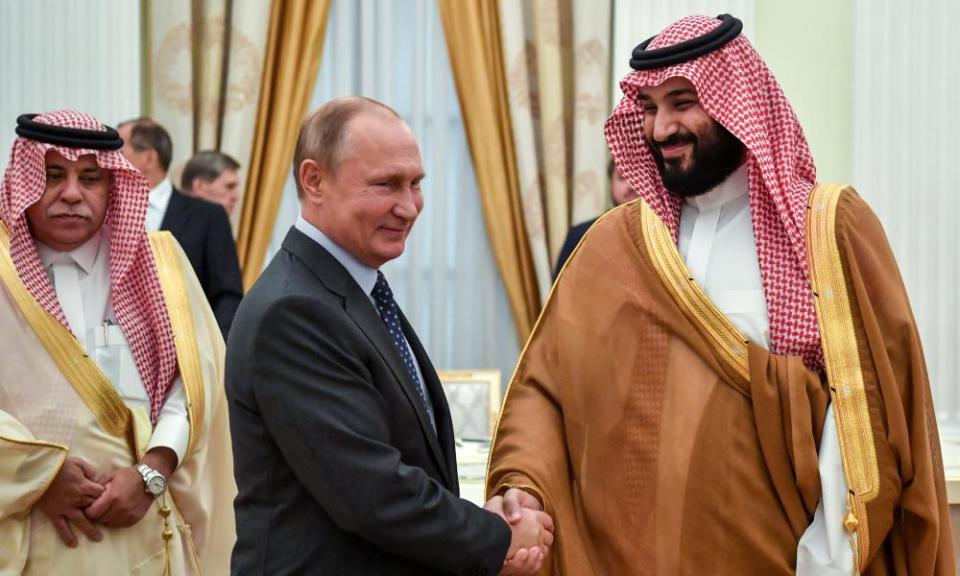Opec: Saudis keen to pump more oil but cartel's other members not sold
At the meeting Vienna, Opec members will debate whether to lift the 18-month-old production cap to stabilize prices

As the Organization of Petroleum Exporting Countries (Opec) prepares to meet on June 22, its members are looking at a very different world than just a few years ago.
The massive oil supply glut – and rock bottom prices – is gone. The global economy is stronger, fossil-fuel energy demand is at a record high, and the nuclear deal that allowed Iran, an Opec member, to start selling oil again is in tatters. After falling to sub-$30 a barrel in early 2016 for Brent, the global benchmark, and West Texas Intermediate, the US benchmark, oil prices have risen to about $76 and $67 a barrel respectively.
Crude oil demand now outstrips supply, and Opec members will debate whether to lift the 18-month-old production cap to stabilize prices. It’s believed Saudi Arabia wants to pump more, as does Russia, a key non-Opec member, but poorer Opec members would rather see prices continue to rise.
Agreements are never easy for the oil cartel, but oil-market watchers say even if the cap is lifted, spare global capacity to produce more oil is limited, which means for the first time in many years the oil market may be at the mercy of potential supply shocks or geopolitical tensions rattling prices.
After surprising discipline by Opec members to hold to the cap, more oil is coming to the market. That’s why Brent and WTI prices are off their May highs of around $80 and $73, said analyst Scott Roberts of Invesco Fixed Income. Saudi Arabia and Russia said they were already pumping more than before, curbing the recent rally.
Those announcements show where Opec may be leaning, Roberts said, but cartel confabs are complex. Opec members may be irritated that it appears that the US and Saudi Arabia have been discussing policy before the meeting. Trump complained at least twice, on 20 April, and then again on 13 June, about oil prices.
Looks like OPEC is at it again. With record amounts of Oil all over the place, including the fully loaded ships at sea, Oil prices are artificially Very High! No good and will not be accepted!
— Donald J. Trump (@realDonaldTrump) April 20, 2018
Oil prices are too high, OPEC is at it again. Not good!
— Donald J. Trump (@realDonaldTrump) June 13, 2018
Given the Saudi’s raised output in May, it may have appeared that the Saudis was responding to Trump’s tweet.
Roberts said Opec could boost production by about a million barrels day fairly rapidly, but several Opec countries have problems. Venezuelan production continues to decline; it’s unknown how much Iranian production might be lost because of sanctions; and in Angola, Libya and Nigeria production is also crimped. And some Opec members want prices to go higher to help them meet their country’s budgets. Thus, there are limits to how much extra oil the cartel can be called on to supply.
US shale producers can step up to meet any supply deficit, but Roberts and Phil Flynn, senior energy analyst at the Price Futures Group, said it takes time for them to increase output because of the nature of shale mining. Roberts said production from the Permian Basin, the biggest shale deposit, is being curbed because of infrastructure bottlenecks to get oil delivered to refineries.
Rob Thummel, portfolio manager at Tortoise Capital, which focuses on energy markets, said those bottlenecks could last another 18 months, another aspect Opec members will likely take into consideration at the meeting.
What Opec doesn’t want to do is hurt demand, Thummel said. Significant drops in US and global oil inventories show consumer demand is at record highs, spurred by the lower oil prices and now a stronger global economy, said Roberts and Michael Cohen, analyst at Barclays. Going into the second half of the year, demand will likely to continue to increase with the summer driving season ahead, Thummel said.
Roberts said the $4 a gallon on a retail basis “is a psychological point people keep in mind”.
With demand currently outpacing supply, it leaves the market in a situation it hasn’t been in for some time: susceptible to price shocks. Although the market probably won’t revisit the huge price swings from yesteryear because the US is now such a big producer, Thummel said, it’s still a possibility.
Flynn said the markets really aren’t ready for the potential impact of geopolitical threats or outright output disruption. “If you look at the lack of spare capacity from Opec and you compare it to demand, there’s just no room for error. What if we have another hurricane,” he said, referring to Hurricane Harvey, which took out refinery capacity in Houston and sent gasoline prices soaring for a while last fall.
Cohen said the market has already priced in a slight rise in output – say 700,00 to 800,000 barrels per day. If there’s a lack of consensus about upping output, that could be a bullish sign and push Brent prices to average around $80 to $85 for the year, above current levels.
There’s one other factor to consider, Roberts said, and that’s the US dollar. A stronger greenback weighs on oil since it’s denominated in dollars. That could keep a cap on prices and limit how much money Opec makes at higher production levels.
“A strong dollar hurts Opec, no doubt about it,” Roberts said.

